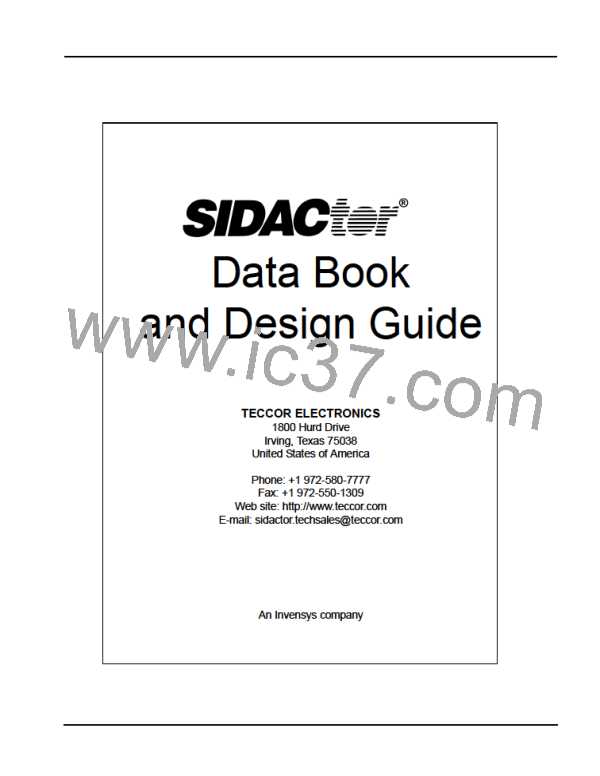Overcurrent Protection
To select the most appropriate combination of TeleLink SM fuse and SIDACtor device,
decide the regulatory requirement your equipment must meet:
Regulatory Requirement
GR 1089
TeleLink SM Fuse
F1250T
SIDACtor Device
C Series
B Series
A Series
A Series
A Series
All
TIA-968, Type A
TIA-968, Type B
ITU K.20
F1250T
F0500T
F1250T
F1250T
ITU K.21 Basic/Enhanced
UL 60950
All
For applications that do not require agency approval or multiple listings, contact the factory.
Power/Line Feed Resistors
Typically manufactured with a ceramic case or substrate, power and line feed resistors
have the ability to sink a great deal of energy and are capable of withstanding both lightning
and power cross conditions.
Advantages
Power and line feed resistors are available with very tight resistive tolerances, making them
appropriate for applications that require precise longitudinal balance.
Restrictions
Because power and line feed resistors are typically very large and are not available in a
surface mount configuration, these devices are less than desirable from a manufacturing
point of view. Also, because a thermal link is typically not provided, power and line feed
resistors may require either a fuse or a PTC to act as the fusing element during a power
cross condition.
Applications
Power and line feed resistors are typically found on line cards that use overvoltage
protectors that cannot withstand the surge currents associated with applicable regulatory
requirements.
Flameproof Resistors
For cost-sensitive designs, small (1/8 W - 1/4 W), flameproof metal film resistors are often
used in lieu of PTCs, fuses, and power or line feed resistors. During a transient condition,
flameproof resistors open when the resultant energy is great enough to melt the metal used
in the device.
Advantages
Flameproof resistors are inexpensive and plentiful.
http://www.teccor.com
+1 972-580-7777
5 - 16
© 2002 Teccor Electronics
SIDACtor Data Book and Design Guide
®

 TECCOR [ TECCOR ELECTRONICS ]
TECCOR [ TECCOR ELECTRONICS ]